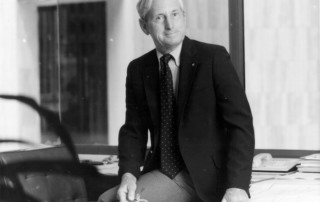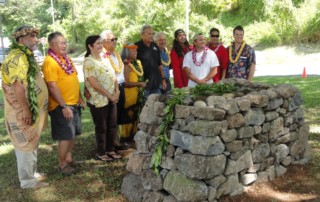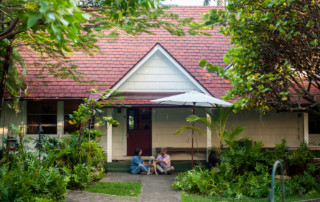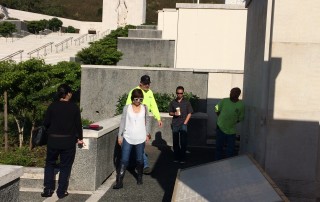Honoring Preservation Visionaries
Frank Haines and his Award The Frank Haines Award, presented by the Historic Hawaii Foundation at the annual Preservation Honor Awards Ceremony, was established in 2009 and is named for master architect Frank Haines, FAIA who passed away on August 10, 2017. From 1948, Haines headed many prominent architectural projects, including the Prince Kūhiō Federal Building, Kaiser Moanalua Hospital, Kaiser's Honolulu Clinic, Bishop Square and the restoration of the Ali‘iōlani Hale. This award is presented to an individual who has demonstrated sustained and outstanding achievements in the area of preserving the significant historic and cultural places of Hawaii. Below is a list of all of the recipients of the Award since its inception in 2009. We are deeply indebted to these visionary and hardworking individuals who have taken great strides to preserve Hawaii's historic places and inspire others to follow suit. 2009 Frank S. Haines, FAIA 2010 Billy Fields, in recognition of his lifetime dedication to restoring significant Native Hawaiian sites and teaching others his cultural practice. As a career stone mason, Fields concentrates on restoring sacred and traditional Native Hawaiian sites using traditional, dry-stack techniques used prior to western contact and the introduction of mortar. Using these traditional techniques, he furthers the traditional masonry practices in the repair, restoration and reconstruction of dry-laid stone walls, platforms and terraces on significant structures including Hapaiali‘i and Ke‘eku Heiau at Keauhou; Kūka‘ō‘ō Heiau in Mānoa; and walls, fish ponds and burial platforms across the state. Billy Fields (2010) 2011 William R. Chapman, D. Phil., in recognition of his work as Director, Historic Preservation Program, University of Hawai‘i at Mānoa. The Historic Preservation Program at UH Mānoa was founded in 1986 by William [...]







